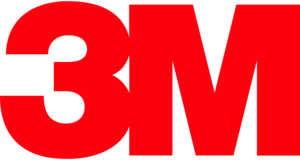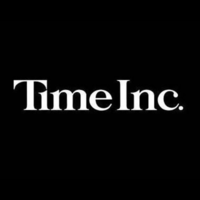At BrightEdge our top value is customer success, which means delivering innovations to help our customers stay ahead in the competitive search landscape. Our goal is to be the best partner in content performance, which is why we consistently deliver the most advanced technology and content marketing.
For over six years, the BrightEdge Data Cube has been at the foundation of BrightEdge S3, powering our Customizable Recommendations, Search Opportunity Forecasting, Page Reporting, and much more. In that time we’ve continuously enhanced the Data Cube, and are now exposing this lightning fast, research on-demand technology to our customers. The Data Cube provides marketers with the insights they need to make strategic business decisions that drive revenue. Only an enterprise SEO company would design and maintain such a useful resource.
Access billions of pieces of data on-demand
The BrightEdge Data Cube is a massive content repository, the industry’s largest data set, made up of billions of pieces of information including keywords, search terms, rich media, and content, along with its performance on the web. BrightEdge processes more than 100 terabytes of data each week. We do so because today’s marketers need a massive data set to be able to understand their entire organic search footprint and build a competitive strategy to win. The Data Cube delivers to marketers the same level of big data processing power and scale that Facebook and Twitter bring to the consumer space.
Perform research, identify opportunities, and explore competitive strategies
Within one centralized view, marketers may perform either URL-based or keyword-based research in real time. BrightEdge provides two ways to access the Data Cube. With Goal Based Research we help marketers quickly identify the data that matters most, aligning content performance with business outcomes. With Freeform Search marketers can enter in a keyword or URL in the same way a Google search is performed.
Research can be performed in two ways: Goal Based or Freeform
Goal-Based Research
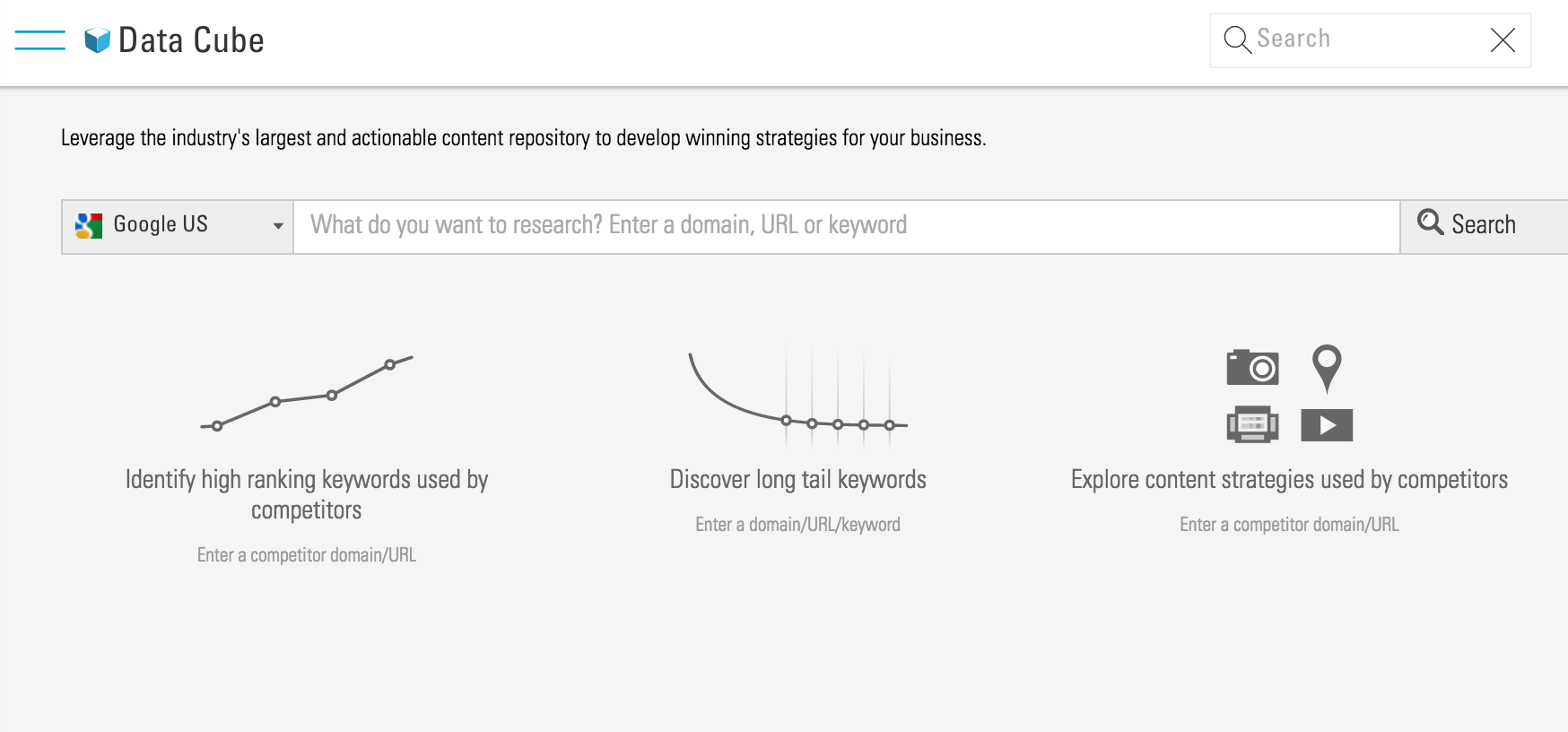
|
Goals You Can Select
|
Why it Matters
|
|
Identify high-volume keywords – Find related keywords with search volume greater than 1,000 and develop new content to drive traffic and engagement
|
Focus on popular keywords that drive the highest demand
|
|
Discover long tail keywords – See results that contain more than 3 words in a phrase that are driving competitive performance
|
Identify less-competitive keywords that convert better
|
|
Explore high value keywords – Find keywords with a value greater than 80 and prioritize efforts
|
Hone in on higher converting keywords
|
|
Uncover videos and rich content – Identify competitors running successful rich content strategies and find other ways to rank in the SERP
|
Discover new content opportunities and increase visibility in the SERP
|
Freeform Search
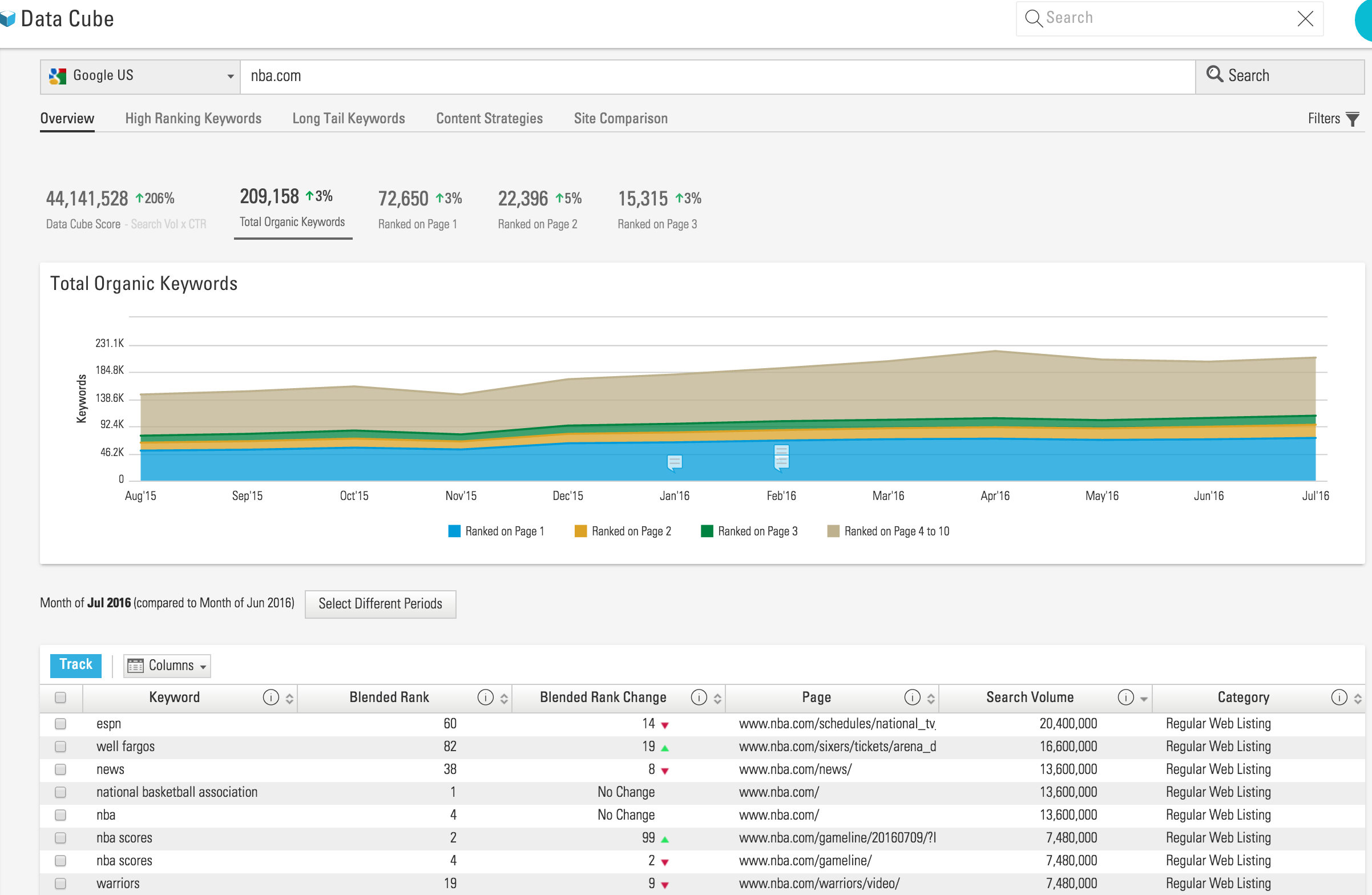
Understand the real demand for your content with the Data Cube Score
With the Data Cube Score you can understand how well you are targeting demand and gain a detailed understanding of the topics that resonate best with consumers.
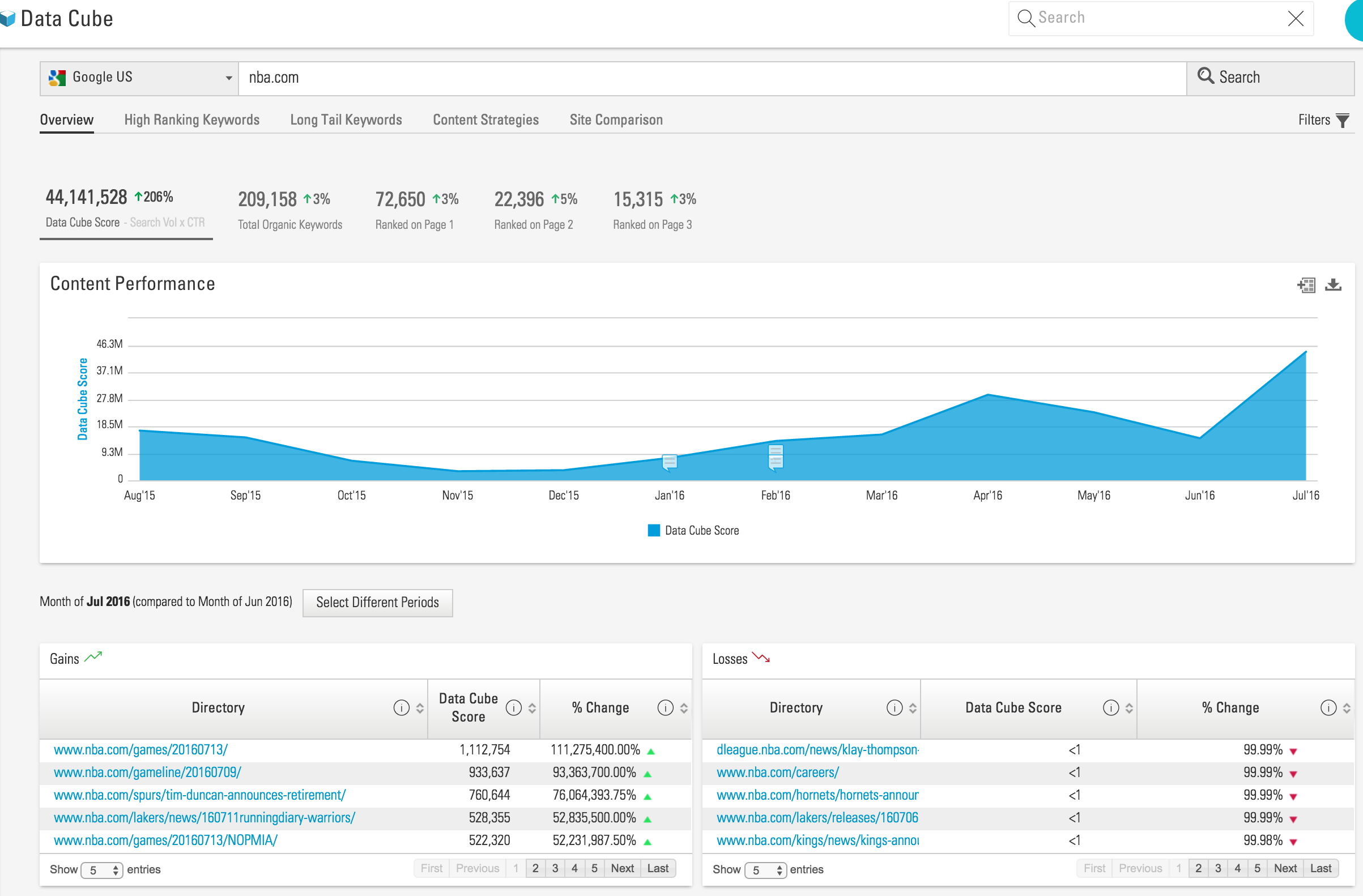
Win with Contextual Recommendations
Improve performance with semantically-related topics powered by the Data Cube
About Latent Semantic Indexing (LSI): Web content is crawled by a search engine and the most common words and phrases are collated and identified as the keywords for the page. LSI looks for synonyms related to the title of your page.
For example, if the title of your page was “Outdoor Furniture,” the search engine would expect to find words relating to that subject in the content of the page as well, e.g. “patio furniture”, “patio sets”, “patio umbrella”, “adirondack chairs,” and “porch swing”.
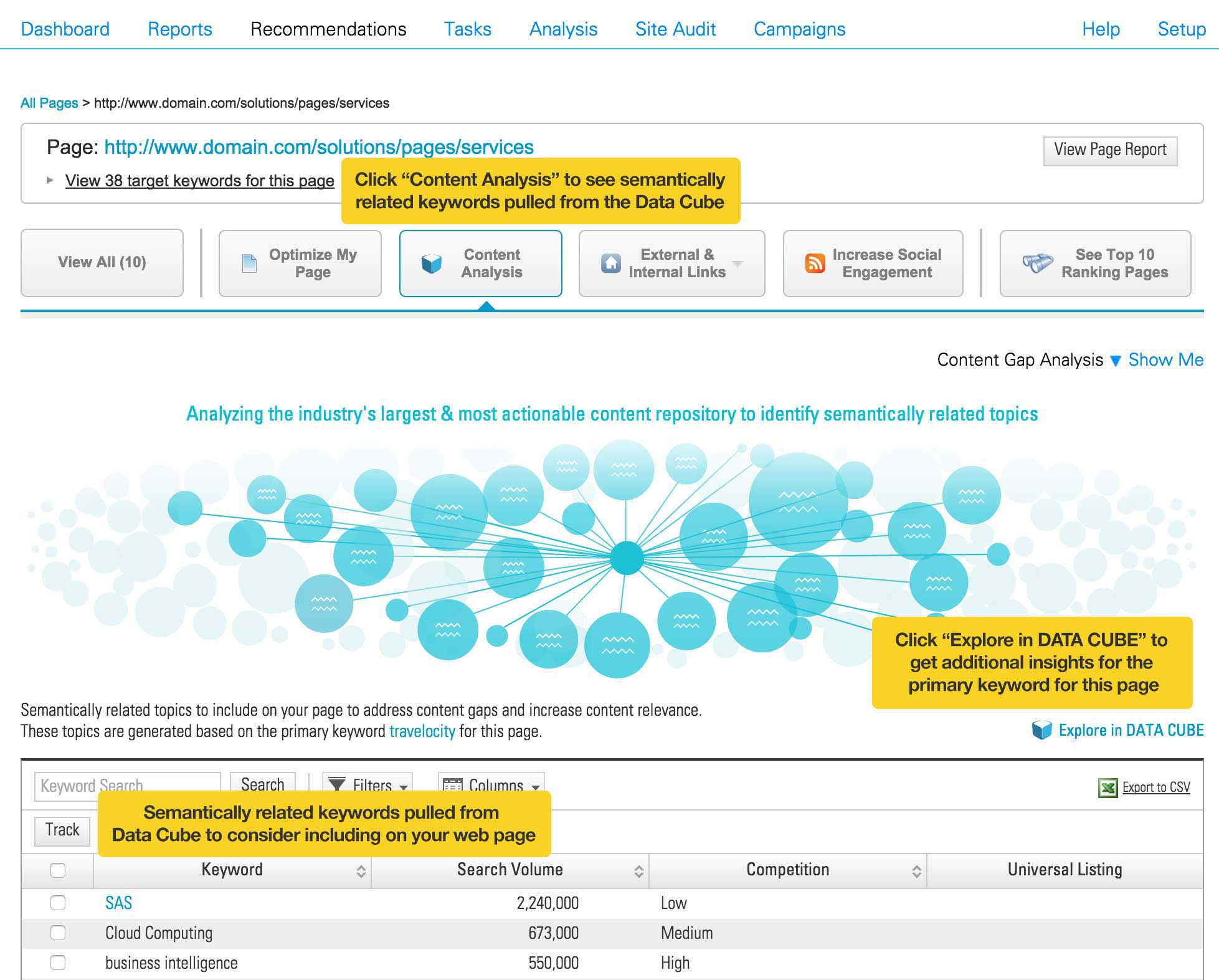
Contextual Recommendations drive performance
- Powerful insights - Tap into the power of the Data Cube to identify semantically related keywords
- Identify low-hanging fruit - Identify keywords with low competition that you consider optimizing
- Actionable - Identify keywords that you’d like to manage, track, and assign as Tasks in BrightEdge
Trended Data analysis enables spot-on content strategy
Trended Data in Data Cube shows you exactly what content and which keywords have been your best (or worst) performers over time. This information allows you to easily benchmark, evaluate, and improve your SEO performance. Even better, you can see whether your competition is trending better or worse at various points in time, and exactly when their performance trajectory started to change. This powerful level of detail arms you with all the insight you need to win at content-driven SEO.
View trended performance of your rich media
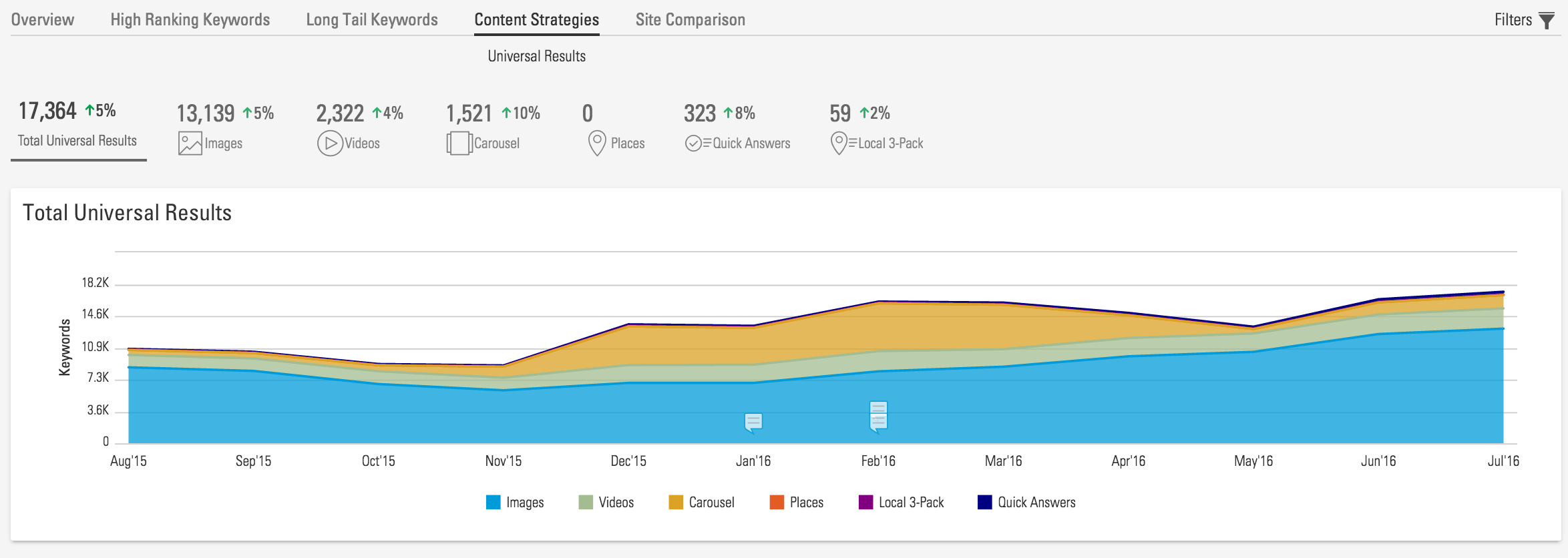
Global coverage
The BrightEdge Data Cube supports ten search engines: Google US, Google UK, Google Australia, Google Brazil, Google Canada, Google Denmark, Google France, Google Germany, Google Japan, and Google Netherlands.
Seamless integration with your content performance workflow
At BrightEdge one of our core tenets of product design is that data is only as good as what users can do with it. Research is only meaningful when it’s actionable. That’s why when we built the BrightEdge Data Cube, rather than creating a standalone research tool, we instead built and integrated this research technology into our platform. With the BrightEdge Data Cube brands have an end-to-end workflow for driving performance. After discovering keywords that work well for your competitors, you can prioritize keywords, and then optimize them in BrightEdge S3.

Optimize Content with Content Optimizer
















